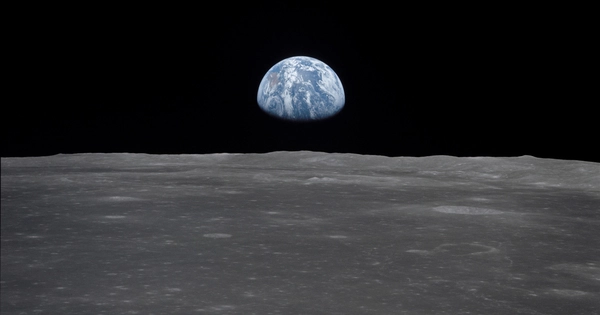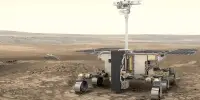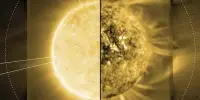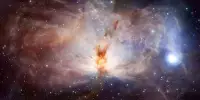Lunar glass, also known as impact glass or tektites, are formed when asteroids or comets strike the Moon’s surface, generating enough heat and pressure to melt and vaporize the surrounding rock. This molten material is ejected into space and then cools rapidly, forming glass-like structures that rain down onto the Moon’s surface.
A research team discovered that asteroid impacts on the Moon millions of years ago precisely coincided with some of Earth’s largest meteorite impacts, such as the one that wiped out the dinosaurs.
A team led by Curtin University discovered that asteroid impacts on the Moon millions of years ago coincided precisely with some of Earth’s largest meteorite impacts, such as the one that wiped out the dinosaurs.
The study also discovered that major impact events on Earth were preceded by a series of smaller impacts, shedding new light on asteroid dynamics in the inner solar system, including the possibility of potentially devastating Earth-bound asteroids.
We used a variety of microscopic analytical techniques, numerical modeling, and geological surveys to determine how and when these microscopic glass beads from the Moon formed.
Professor Nemchin
The international research team studied microscopic glass beads aged up to two billion years old that were found in lunar soil brought back to Earth in December 2020 as part of the Chinese National Space Agency’s Chang’e-5 Lunar mission. The heat and pressure of meteorite impacts created the glass beads and so their age distribution should mimic the impacts, revealing a timeline of bombardments.
Lead author Professor Alexander Nemchin, from Curtin University’s Space Science and Technology Centre (SSTC) in the School of Earth and Planetary Sciences, said the findings imply that the timing and frequency of asteroid impacts on the Moon may have been mirrored on Earth, telling us more about the history of evolution of our own planet.

“We used a variety of microscopic analytical techniques, numerical modeling, and geological surveys to determine how and when these microscopic glass beads from the Moon formed,” Professor Nemchin explained.
“We discovered that some of the age groups of the lunar glass beads correspond precisely with the ages of some of the largest terrestrial impact crater events, such as the Chicxulub impact crater, which was responsible for the dinosaur extinction event.”
“The study also discovered that large impact events on Earth, such as the Chicxulub crater 66 million years ago, could have been accompanied by a number of smaller impacts. If this is correct, it implies that the age-frequency distributions of impacts on the Moon could provide useful information about impacts on the Earth or the inner solar system.”
Future comparative studies, according to co-author Associate Professor Katarina Miljkovic, also of Curtin’s SSTC, could provide more insight into the Moon’s geological history.
“The next step would be to compare the data gleaned from these Chang’e-5 samples with other lunar soils and crater ages to be able to uncover other significant Moon-wide impact events which might in turn reveal new evidence about what impacts may have affected life on Earth,” Associate Professor Miljkovic said.
















